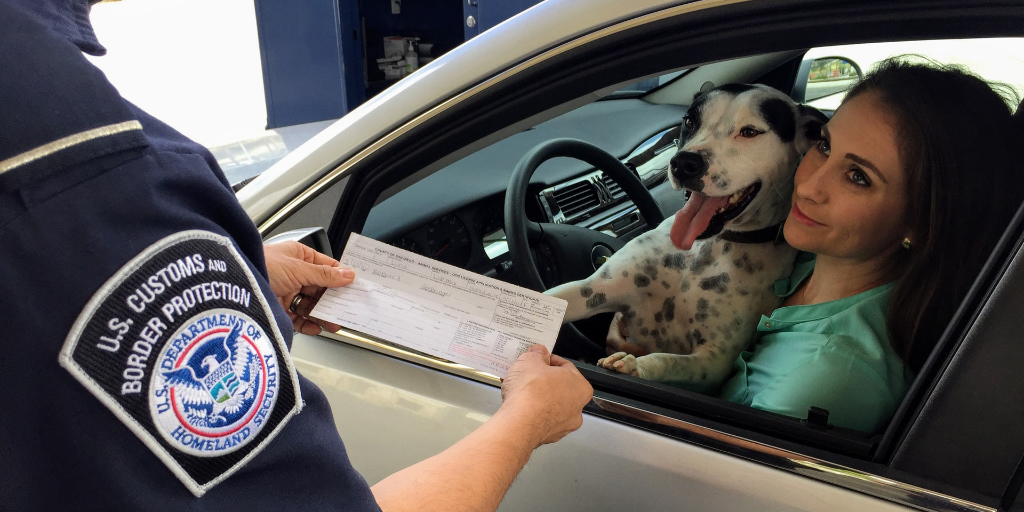It’s been a long year for towns on the US-Canada border
Lesson summary
Hi there, it’s Jeff and this is Plain English lesson number 358. JR is behind the controls, and he posted the full lesson at PlainEnglish.com/358.
Coming up today: they’re so close, but so far away. Towns along the US-Canadian border, once so closely-knit, are now closed off from one another. Speaking of “closely-knit,” that’s the expression we review today. And I have a quote of the week, too. Let’s get going!
Border towns struggle with closures
The US and Canada share an 8,891-kilometer border, the longest land border between any two nations in the world. In many places, American and Canadian towns operated as one, with families living on both sides of the invisible boundary and residents crossing several times a day for necessities, visiting friends and family, and leisure-time activities.
But all that ground to a halt when the two nations closed their borders to non-essential traffic when the pandemic hit in March 2020, leaving many communities—and even families—divided.
Derby Line, Vermont and Stanstead, Quebec are two towns that have, over the years, have blended into one. The international boundary between the US and Canada runs right down the middle of Rue Canusa; homes on one side of the street are in Canada, while homes on the other side are in America. Elsewhere, the border weaves through the two towns; it even runs straight through the public library.
In normal times, the border isn’t freely open: six border crossing stations serve the two towns and residents crossing from one side to the other have to report their crossing. Still, it was common to cross from one side to the other even several times a day.
Not anymore. Holders of a single passport—US or Canadian—can cross only for narrowly-defined essential work. Dual passport holders can cross the border for any reason they like, but they have to quarantine for 14 days upon each crossing. That makes repeated crossings impractical.
Businesses, including cafes and hair salons, that rely on cross-border traffic now find their potential markets are cut in half. Many families have some members on one side, and other members on the other side of the border. Neighbors on Canusa Street can’t talk to one another face to face.
One couple got engaged right before the pandemic hit; he lives in Canada, while she lives in the US. They can still meet and talk in person—they just have shout over the yellow tape that divides them. It’s a common scene, especially in nicer weather: families reunite but can’t touch. Border patrol agents supervise the area.
Things are even harder at the other extreme of the American-Canadian border. Just 78 people live in the town of Hyder, Alaska. Hyder is three miles from the much larger Canadian town of Stewart, British Columbia. Stewart has a population of 400. But here’s the catch: Hyder doesn’t have a roadway connection to any other town in the United States. The nearest American city is Ketchikan, Alaska, which can only be reached by a 75-mile seaplane flight. The only way to go to any other town by road is by driving through Canada.
The towns are so closely-knit that this has never been a problem. The US border is announced by a simple sign on the side of the road. The Canadian government manages a small border services office; the US government doesn’t have any border controls at all.
From April through September, one person from each family in Hyder was allowed to enter Canada just once per week to buy supplies. It was only in September that the Canadian government relaxed the rules…somewhat. Canada now allows residents of Hyder to cross the land border for the necessities of life—their word, not mine—which would include food and medical services.
But as we’ve all learned, essential services can mean different things to different people. The Canadian government specified that border crossings are allowed for groceries, fuel, medical care, or helping family members in need. Recreation and socializing don’t count as necessary. And by the way, neither Hyder nor Stewart has had a case of Covid during the entire pandemic.
A more hopeful scene plays out every weekend at Peace Arch State Park in Washington State, in between Seattle and Vancouver. At the park, a century-old gleaming white arch is inscribed with the phrase, “Children of a common mother,” to signify the close historical bonds between the two countries.
But the closed border has divided families and communities here, just as it has back east. The only difference is that Peace Arch State Park is a bit of an exception to the formal border-crossing rules. The border is marked by a ditch in the ground, and Canadian residents can cross into the US on foot and visit Peace Arch State Park without going through a formal border crossing.
The border is real, and border rules apply—you can’t bring goods back from the other side; you have to leave the park in the direction you came—but this is the only place that US and Canadian residents can see each other (and touch each other) without being subject to quarantine rules. Park rangers say people have driven to the park from thousands of miles away to reunite with family and friends from Canada.
America and Canada have been extending the border closures month by month. Neither side has said when the border restrictions would be relaxed.
Fascinating towns
I’ve never been to a US-Canadian border town. I’ve driven across the border a few times, but just on the major highways that connect the two countries. But I’m fascinated by these towns that are so close.
If you liked this lesson, there are two others you might enjoy. In Lesson 200, we talked about the differences between living in the US and Canada . And in Lesson 124, we talked about Toronto as a tourist destination .
Learn English the way it’s really spoken

